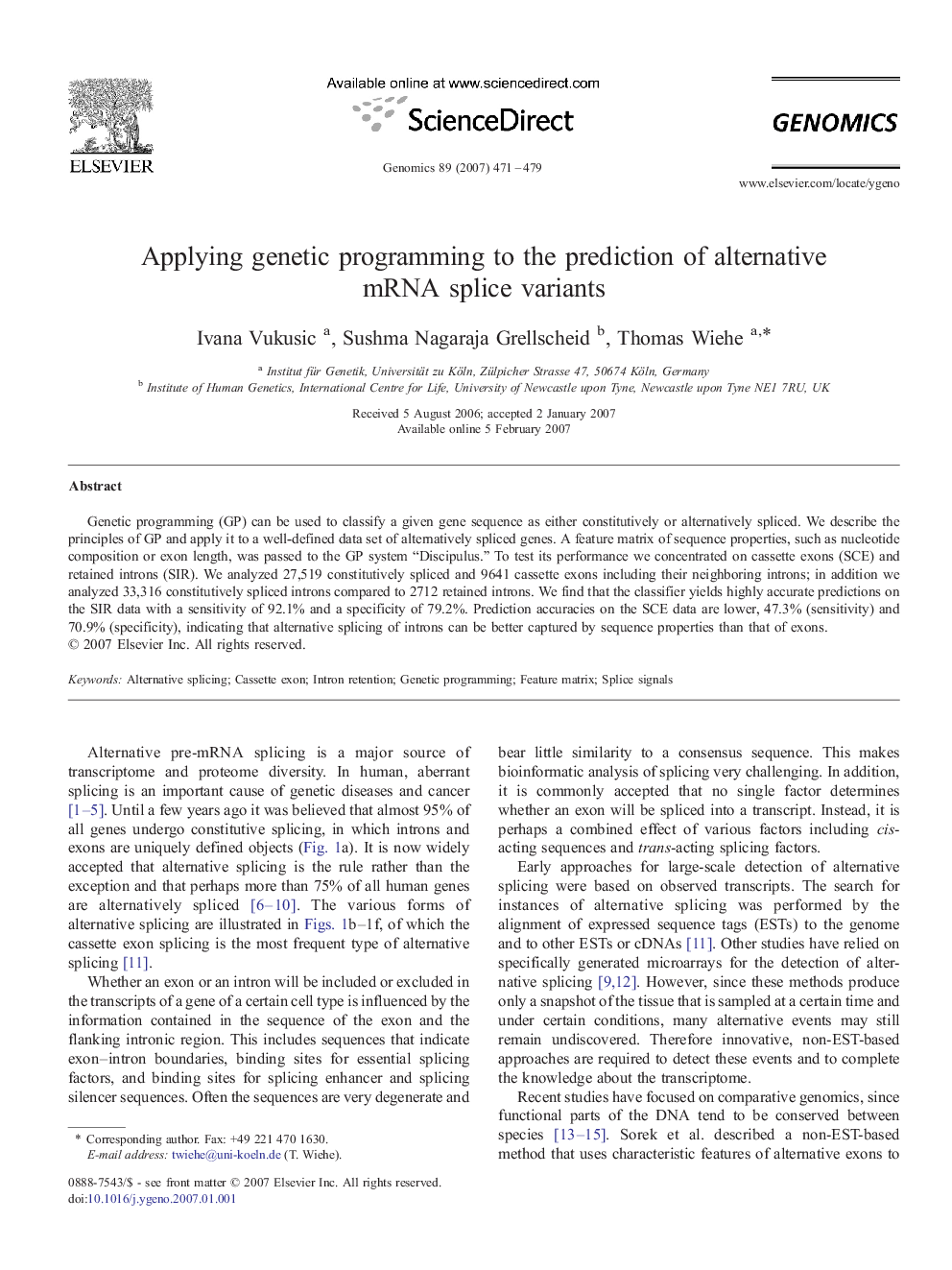| Article ID | Journal | Published Year | Pages | File Type |
|---|---|---|---|---|
| 2821185 | Genomics | 2007 | 9 Pages |
Genetic programming (GP) can be used to classify a given gene sequence as either constitutively or alternatively spliced. We describe the principles of GP and apply it to a well-defined data set of alternatively spliced genes. A feature matrix of sequence properties, such as nucleotide composition or exon length, was passed to the GP system “Discipulus.” To test its performance we concentrated on cassette exons (SCE) and retained introns (SIR). We analyzed 27,519 constitutively spliced and 9641 cassette exons including their neighboring introns; in addition we analyzed 33,316 constitutively spliced introns compared to 2712 retained introns. We find that the classifier yields highly accurate predictions on the SIR data with a sensitivity of 92.1% and a specificity of 79.2%. Prediction accuracies on the SCE data are lower, 47.3% (sensitivity) and 70.9% (specificity), indicating that alternative splicing of introns can be better captured by sequence properties than that of exons.
